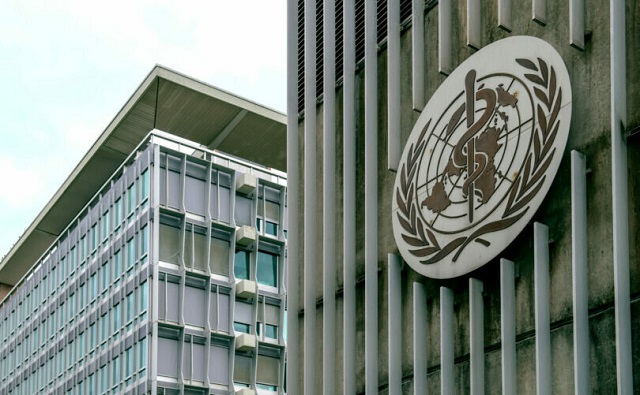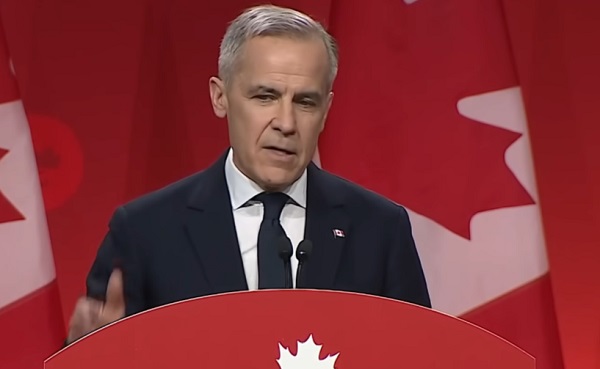Alberta
Albertans still waiting for plan to grow the Heritage Fund

From the Fraser Institute
By Tegan Hill
In February 2024, the Smith government promised to share a plan to grow the Heritage Fund—Alberta’s long-term resource revenue savings fund—with the public before the end of 2024. But 2025 is upon us, and Albertans are still waiting.
The Lougheed government originally created the Heritage Fund in 1976/77 to save a share of the province’s resource wealth, including oil and gas revenues, for the future. But since its creation, Alberta governments have deposited less than 4 per cent of total resource revenue in the fund.
In other words, for decades successive Alberta governments have missed a golden opportunity. When governments make deposits in the Heritage Fund, they transform onetime (and extremely volatile) resource revenue into a financial asset that can generate more stable earnings over time. Eventually, the government could use annual income from the fund to replace volatile resource revenue in the budget.
Historically, however, rules that would have helped ensure the fund’s growth (for example, a requirement to deposit 30 per cent of resource revenue annually) were “statutory” rather than “constitutional,” which meant Alberta governments could easily disregard, change or eliminate these rules once they were no longer convenient.
And they did. The government changed that 30 per cent requirement to 15 per cent by 1982/83, and after an oil price collapse, eliminated it entirely in 1987/88. Due to a lack of consistent deposits, paired with the real value of the fund eroding over time due to inflation, and nearly all fund earnings being spent, the Heritage Fund is expected to be worth less than $25 billion in 2024/25.
Again, while Premier Smith has promised to grow the fund to between $250 billion to $400 billion by 2050, we’ve yet to see how she plans to do that. Whatever plan the government produces, it should heed lessons from other successful resource revenue savings fund such as Alaska’s Permanent Fund.
The Alaska government created its fund the same year Alberta created the Heritage Fund, but Alaska’s fund is worth roughly US$80 billion (or C$113 billion) today. What has the Alaska government done differently?
First, according to Alaska’s constitution, the state government must deposit 25 per cent of all mineral revenues into the fund each year. This type of “constitutional” rule is much stronger than a “statutory” rule that existed in Alberta. (While Canada does not have separate provincial constitutions, it’s possible to change Canada’s Constitution for province-specific measures.) Second, the Alaska government must set aside a share of the fund’s earnings each year to offset the effects of inflation—in other words, “inflation-proof” the principal of the fund to preserve its real value. And finally, the government must pay a portion of fund earnings to Alaskan citizens in annual dividends.
The logic of the first two rules is simple—the Alaskan government promotes growth in the fund by depositing mineral revenue annually, and inflation-proofing maintains the fund’s purchasing power. But consider the third rule regarding dividends.
The Alaska government created the annual dividend, paid out annually to Alaskans, to create political pressure for future governments to responsibly maintain the fund. Because citizens have an ownership share in the fund, they’re more interested in the state maximizing returns from its resource wealth. This has helped maintain and reinforce robust fiscal rules that make the Permanent Fund successful.
Based on this success, if the Smith government began contributing 25 per cent of resource revenue to the Heritage Fund and inflation-proofed the principal, it could pay each Albertan a total dividend between roughly $600 to $1,100 from 2024/25 to 2026/27, or roughly $2,300 to $4,400 per family of four. And as the fund grows, so would the dividends.
Almost one year ago, the Smith government promised a new plan for the Heritage Fund. When the plan is finally released, it should include a constitutional requirement for consistent contributions and inflation-proofing, and annual dividends for Albertans.
Alberta
Made in Alberta! Province makes it easier to support local products with Buy Local program

Show your Alberta side. Buy Local. |
When the going gets tough, Albertans stick together. That’s why Alberta’s government is launching a new campaign to benefit hard-working Albertans.
Global uncertainty is threatening the livelihoods of hard-working Alberta farmers, ranchers, processors and their families. The ‘Buy Local’ campaign, recently launched by Alberta’s government, encourages consumers to eat, drink and buy local to show our unified support for the province’s agriculture and food industry.
The government’s ‘Buy Local’ campaign encourages consumers to buy products from Alberta’s hard-working farmers, ranchers and food processors that produce safe, nutritious food for Albertans, Canadians and the world.
“It’s time to let these hard-working Albertans know we have their back. Now, more than ever, we need to shop local and buy made-in-Alberta products. The next time you are grocery shopping or go out for dinner or a drink with your friends or family, support local to demonstrate your Alberta pride. We are pleased tariffs don’t impact the ag industry right now and will keep advocating for our ag industry.”
Alberta’s government supports consumer choice. We are providing tools to help folks easily identify Alberta- and Canadian-made foods and products. Choosing local products keeps Albertans’ hard-earned dollars in our province. Whether it is farm-fresh vegetables, potatoes, honey, craft beer, frozen food or our world-renowned beef, Alberta has an abundance of fresh foods produced right on our doorstep.
Quick facts
- This summer, Albertans can support local at more than 150 farmers’ markets across the province and meet the folks who make, bake and grow our food.
- In March 2023, the Alberta government launched the ‘Made in Alberta’ voluntary food and beverage labelling program to support local agriculture and food sectors.
- Through direct connections with processors, the program has created the momentum to continue expanding consumer awareness about the ‘Made in Alberta’ label to help shoppers quickly identify foods and beverages produced in our province.
- Made in Alberta product catalogue website
Related information
Alberta
Province to expand services provided by Alberta Sheriffs: New policing option for municipalities

Expanding municipal police service options |
Proposed amendments would help ensure Alberta’s evolving public safety needs are met while also giving municipalities more options for local policing.
As first announced with the introduction of the Public Safety Statutes Amendment Act, 2024, Alberta’s government is considering creating a new independent agency police service to assume the police-like duties currently performed by Alberta Sheriffs. If passed, Bill 49 would lay additional groundwork for the new police service.
Proposed amendments to the Police Act recognize the unique challenges faced by different communities and seek to empower local governments to adopt strategies that effectively respond to their specific safety concerns, enhancing overall public safety across the province.
If passed, Bill 49 would specify that the new agency would be a Crown corporation with an independent board of directors to oversee its day-to-day operations. The new agency would be operationally independent from the government, consistent with all police services in Alberta. Unlike the Alberta Sheriffs, officers in the new police service would be directly employed by the police service rather than by the government.
“With this bill, we are taking the necessary steps to address the unique public safety concerns in communities across Alberta. As we work towards creating an independent agency police service, we are providing an essential component of Alberta’s police framework for years to come. Our aim is for the new agency is to ensure that Albertans are safe in their communities and receive the best possible service when they need it most.”
Additional amendments would allow municipalities to select the new agency as their local police service once it becomes fully operational and the necessary standards, capacity and frameworks are in place. Alberta’s government is committed to ensuring the new agency works collaboratively with all police services to meet the province’s evolving public safety needs and improve law enforcement response times, particularly in rural communities. While the RCMP would remain the official provincial police service, municipalities would have a new option for their local policing needs.
Once established, the agency would strengthen Alberta’s existing policing model and complement the province’s current police services, which include the RCMP, Indigenous police services and municipal police. It would help fill gaps and ensure law enforcement resources are deployed efficiently across the province.
Related information
-

 2025 Federal Election2 days ago
2025 Federal Election2 days agoRCMP Whistleblowers Accuse Members of Mark Carney’s Inner Circle of Security Breaches and Surveillance
-

 Also Interesting2 days ago
Also Interesting2 days agoBetFury Review: Is It the Best Crypto Casino?
-

 Autism2 days ago
Autism2 days agoRFK Jr. Exposes a Chilling New Autism Reality
-

 COVID-192 days ago
COVID-192 days agoCanadian student denied religious exemption for COVID jab takes tech school to court
-

 2025 Federal Election2 days ago
2025 Federal Election2 days agoBureau Exclusive: Chinese Election Interference Network Tied to Senate Breach Investigation
-

 International2 days ago
International2 days agoUK Supreme Court rules ‘woman’ means biological female
-

 2025 Federal Election1 day ago
2025 Federal Election1 day agoNeil Young + Carney / Freedom Bros
-

 Health2 days ago
Health2 days agoWHO member states agree on draft of ‘pandemic treaty’ that could be adopted in May






